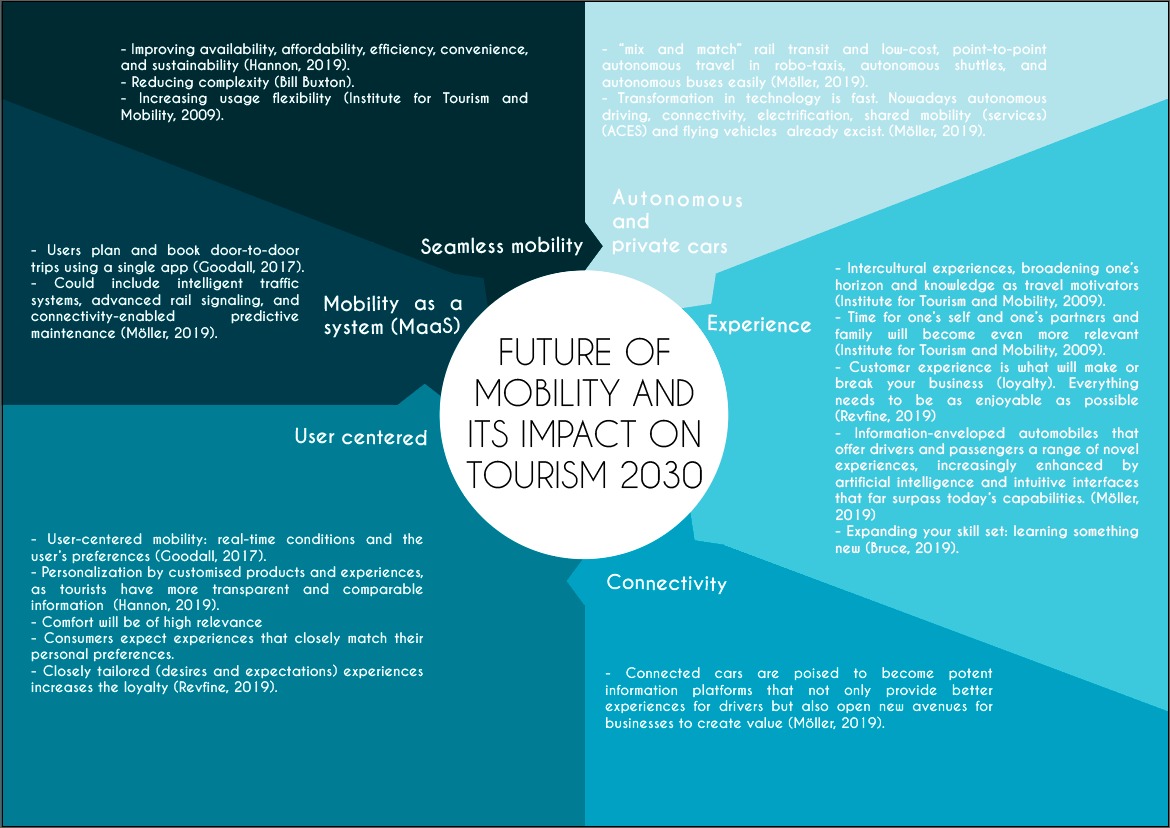
Inspiration & Vison
Vision
What is it like to travel in the future
The future of mobility is not anymore about going as fast as possible from A to B but more about the experience around it. The future mobility experience should be seamless, shared, personalized and supported by interactive technology. For tourists it should be exciting, surprising and adding value to their trip. In future vehicles there will be more room for shared moments in which social bonding can be stimulated by interactive technologies. Also interactive storytelling and creating immersive experiences are upcoming trends which will add to an exciting and surprising experience, which people would not easily forget.


Inspiration sources
As Vince Kadlubek explains (https://www.youtube.com/watch?v=ox6ARz7qIvE ) humans live in a world of mundane and boring routines and therefore they look for something special, unique and misterious. This can be achieved by having a genuine and authentic experience. We all want to have mindblowing experiences by transformations, entering alternative realities. These transforming experiences are the next evolution, as Pine and Gilmore discovered in 2011, which the RELIVE IT experience is based on. And how did we achieved this?

People just book a tour, and they enter in the Ford Tourneo, which starts driving around a city. Then suddently the guide starts speaking. The window shows what you are hearing. Your seat starts moving. You hear something. Lights start blinking. What's happening? You are able to explore an alternative reality. You are suddently in 1979. Your world has suddenly transformed into another.
Interactive AR windows
AR and its technology is fast developing and has a growing attention. As was mentioned before, places like Pompeii are not accesisble for tourist as they used to be. Therefore, AR (and other features which increase the immersiveness) enables to still 'visit' these places.
Real AR windows doesn?t exist yet, but many new technologies now show possibilities and these show the probability that AR windows will exist within ten years. One of our main source for AR experiences was the mixed-reality by the company deepFrame (https://www.realfiction.com/solutions/deepframe), which has a display you can look through like a window, but can also add layers which are interactive by gestures (https://www.youtube.com/watch?time_continue=11&v=gNZuZa6EuN4&feature=emb_logo).
Interactive storytelling
Interactive storytelling is a part of immersive technology, which game companies and companies as Netflix apply by letting watchers make choices which influence the story line. Examples from Netflix are the black mirror movie ?bandersnatch? and ?You vs Wild?; a Bear Grylls documentary series. Also the guardian explains interactive storytelling as a growing trend (https://www.theguardian.com/games/2019/may/02/vr-mixed-reality-storytelling-sundance-festival-new-frontier-narratives ).
Gloves
For the gloves (recommendation), the main inspiration was conducted research by Michael Wirteleski which shown that the recording of sounds while going over a glass surface can be transformed into vibrations, which will simulate touching that texture. A way to further implement the gloves feature is to involve AI and a database. The passengers can touch the window with the gloves at the place where they see an object outside. AI will recognize the object and the database knows which vibrations are needed to simulate the texture of the object. We expect that by 2030 this will be possible, because all the looses parts already exist on a basic level. Besides, nowadays also gloves which makes you feel 3D objects exists.